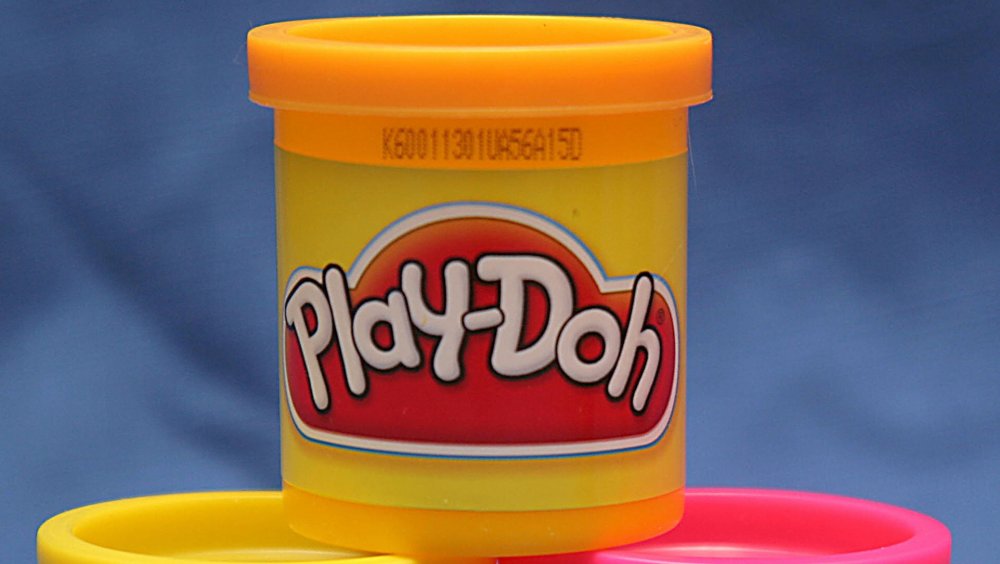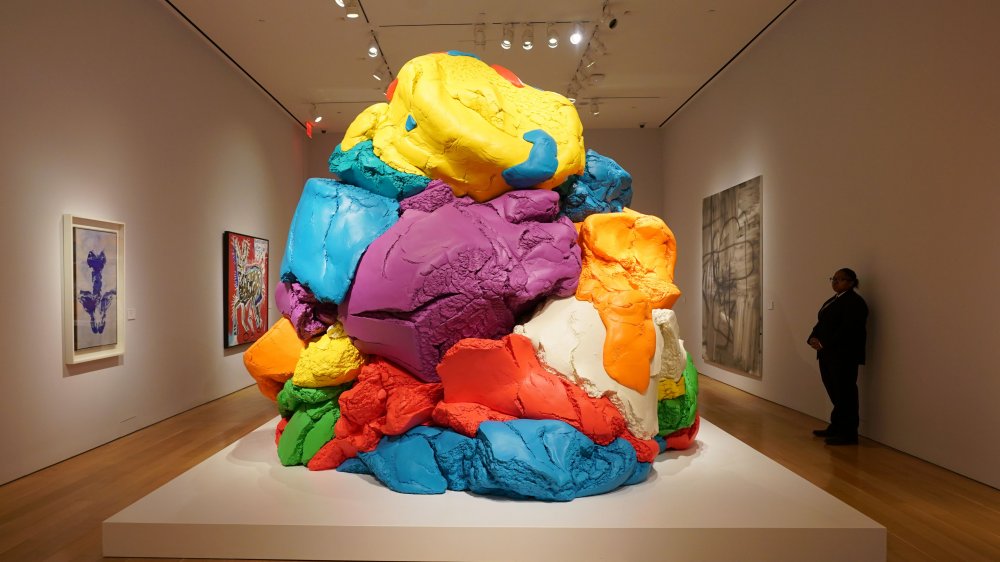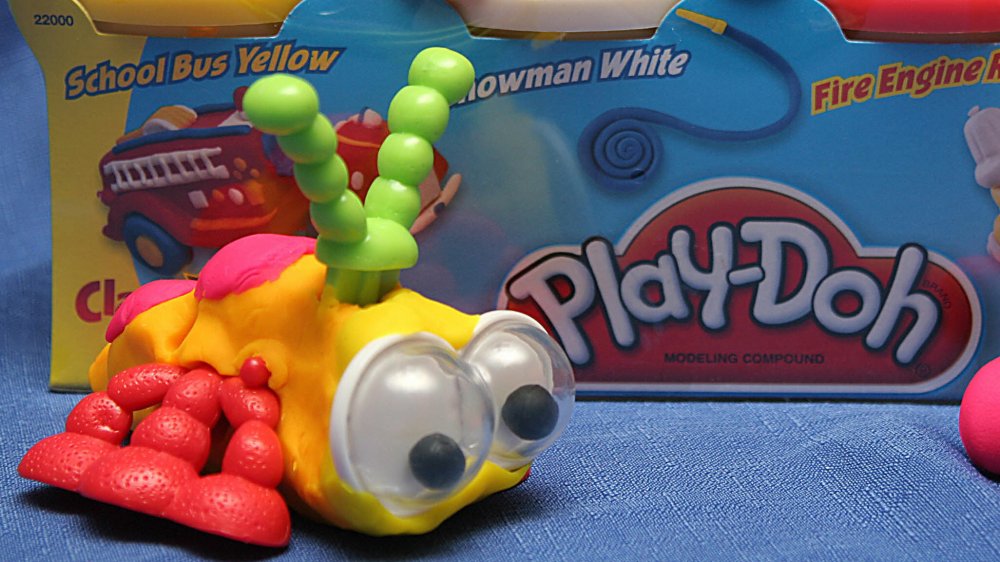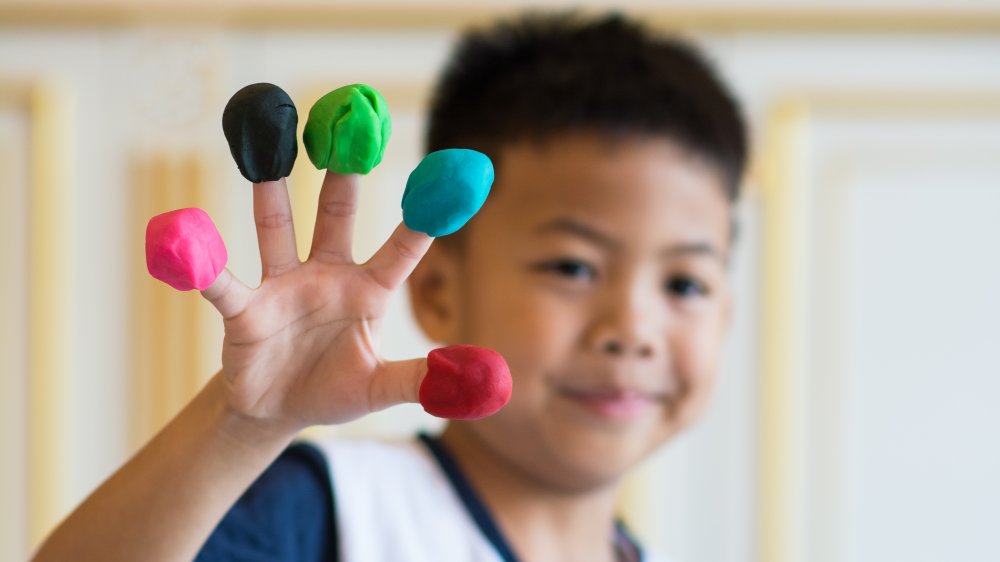The Truth About Why Play-Doh Was Really Created
It's secretly delicious. It's doomed from the start to get mixed into a gross brown lump. It's inexplicably getting a movie? Maybe? From the guy who made the Ghostbusters reboot? More on that later.
Whether you were once a child being raised in the Western world or are currently an adult, swearing under your breath as you try in vain to remove petrified nuggets of technicolor clay from your living room carpet, you're probably achingly familiar with Play-Doh. The rainbow-hued children's modeling compound has been an intrinsic aspect of American youth for just about as far back as anyone can remember, but where did it come from? And why?
If you think that "a clump of salty goo for kids to play with" reeks of being an accidental invention that somebody lucked out with, you've got a nose for the way the business works. It turns out that it wasn't the result of tireless hours spent trying to find the perfect way to give tots something to squish. The truth is even more bland than your nephew's artistic sensibilities.
Play-Doh: Originally made for adults
You know how back in the 1930s, you were constantly wringing your hands, trying to come up with a reliable way to clean dirt and coal residue off of your wallpaper? Well, that's just domesticity in the pre-World War II era. Luckily for you, there was Kutol Non-Crumbly Type Wall Cleaner, the non-toxic substance you could count on to get your walls looking newer than that deal Franklin Roosevelt keeps fireside chatting about.
Then, as time took its terrible toll, newer, easier to clean wall coverings made out of vinyl popped up, and Kutol sales did a nosedive, much to the chagrin of the cigar chompers in their corporate offices at Big Wallpaper Cleaner.
But then, thanks to the entrepreneurial spirit of a New Jersey school teacher named Kay Zufall, Kutol found a second life as an easy to manipulate modeling clay for preschool students. As luck would have it, Zufall's brother in law was Joe McVicker, one of the guys in charge of manufacturing the wallpaper cleaner, and he was more than happy to squeeze some new life out of the stuff, per NJ.com. Colors were added, the product was rebranded, and Play-Doh was born.
Kneel before Play-Doh!
Since then, Play-Doh has become a staple of play rooms and kindergarten classes around the world. USA Today reports that Hasbro sells over 100 million tubs of the gunk annually, and that more than 700 million pounds of Play-Doh have been created. That goes a decent ways towards explaining the fact that there's an honest-to-goodness National Play-Doh Day, celebrated every September 16th, presumably so that Hallmark can sell more cards.
And as with any runaway success in the gangbusters industry that is distracting children while you get five minutes to yourself, Play-Doh may soon be taking to the red carpet, which will be impossible to clean afterwards. In 2015 it was reported that Hasbro was in talks with writer/director Paul Feig to create a Play-Doh movie, causing skeptics the world over to angrily mumble "gotta let this one go, we were wrong about The Lego Movie" while repeating the breathing exercises their therapists recommended. Things have been quiet on the Hollywood front since then, possibly due to Feig's Ghostbusters reboot stumbling out of the gate, but you never know. Maybe a feature length film about colored wallpaper cleaning compound is just the shot in the arm that Tinsel Town needs in a post-superhero-fatigue environment.
More fun Play-Doh facts
Not overloaded enough on Play-Doh facts? For the truly curious, bored, or deranged, it's worth mentioning that the "non toxic" label on the sides of those bright yellow cylinders isn't necessarily something you want to test out. In tragic news for anyone hoping to recreate the spread in that dinner scene from Hook, Play-Doh isn't what you'd call a super food, with the folks at the Daily Meal reporting that its patent includes ingredients such as borax and mineral oil, presumably on a slow food news day. While it won't make you any sicker than your standard lunch at Chipotle, eating the stuff won't do you any favors, except maybe socially when you brag about it to your friends at work.
What might surprise you, however, is the list of benefits that playing with the gloop reportedly has with regard to early childhood development. According to a study published by Michigan State University, young folk who spend time messing with Play-Doh develop better fine motor functions and creative capabilities, putting the Fun Factory head and shoulders above any other factory they're likely to spend time working at between the ages of two and five.



